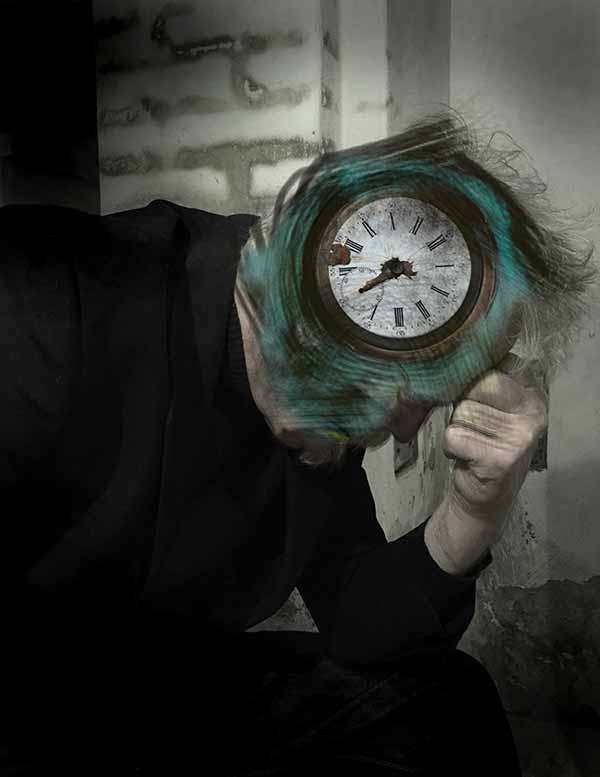Weak Brain Circadian Rhythms Cause Depression-Like Behavior in Mice
UC San Diego scientists demonstrate causal role for circadian clocks in “Despair” behavior
Published Date
By:
- Paul K. Mueller
Share This:
Article Content

photo montage courtesy of Dominic Landgraf
When the master pacemaker that normally synchronizes circadian rhythms in the brain is disrupted, that disruption causes helplessness, behavioral despair, and anxiety-like behavior in mice, say scientists at the University of California San Diego.
It’s the first time scientists have been able to show a causal relationship between functioning circadian clocks and mood regulation.
The results appear in the online edition of the journal Biological Psychiatry.
Most living organisms have evolved internal timekeeping systems, called circadian clocks, to reflect and adapt to needs associated with the recurring cycle of day and night. These clocks broadly affect behavior, metabolism, and physiology, and cells in most tissues express clock genes in a 24-hour rhythm.
“Genetically disrupting rhythmicity of the brain’s circadian pacemaker -- the suprachiasmatic nucleus, or SCN -- causes mice to act as if they are depressed,” said Dr. Dominic Landgraf, one of the UC San Diego researchers. “These mice – which we label ‘SCN-specific Bmal1-knockdown’ mice – may now serve as a new animal model of depression.”
While disturbed circadian rhythms have long been associated with depressive disorders in humans, previous attempts to prove causality were not specific enough to exclude many collateral effects.
Previous studies, for example, disrupted circadian rhythms using light-dark manipulations, global mutations of “clock genes” in every cell, or brain lesions. But light can affect mood in non-circadian ways, clock genes have other, clock-independent functions, and brain lesions damage much more than circadian rhythms.
Landgraf and colleagues, working in Dr. David K. Welsh's UC San Diego laboratory and at Veterans Affairs San Diego Healthcare Systems, set out to disrupt circadian rhythms more selectively.
“Our study,” says Welsh, associate professor of psychiatry and associate director of the Center for Circadian Biology, “provides an animal model with normally developed, anatomically intact brain and light-input pathways, and intact molecular-clock gene machinery everywhere except the SCN.”
“We blocked expression of the ‘clock gene’ Bmal1 in cells of the SCN -- the brain’s master circadian pacemaker – and we saw that these mice exhibited helplessness, behavioral despair, and anxiety-like behavior. They were slower to escape from noxious stimuli, they spent more time immobile when suspended by the tail, and they preferred the dark portion of a light/dark box even more than normal mice. They also gained more weight, and their stress hormone patterns were abnormal.”
Does establishing this causal connection show any promise for human treatment? Welsh is cautious about stretching the findings in mice too far.
“Mice are not humans, and cannot exhibit all the same signs and symptoms of depressed human patients, but it is exciting that we have evidence for a causal connection between circadian clocks and mood regulation in a mouse model,” he said. “Future studies may allow us to design circadian-based therapies for patients with mood disorders.”
Co-authors include Landgraf and Jamie E. Long, Veterans Affairs San Diego Healthcare System and UC San Diego; Christophe D. Proulx and Roberto Malinow, UC San Diego; and Rita Barandas, VA San Diego Healthcare System, UC San Diego, and University of Lisbon, Portugal.
Funding for this research came, in part, from the Department of Veterans Affairs and the Brain & Behavior Research Foundation (NARSAD).
Link to full study.
Share This:
You May Also Like
UC San Diego is Strengthening U.S. Semiconductor Innovation and Workforce Development
Technology & EngineeringStay in the Know
Keep up with all the latest from UC San Diego. Subscribe to the newsletter today.



